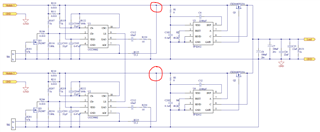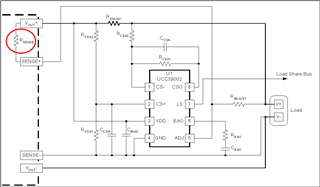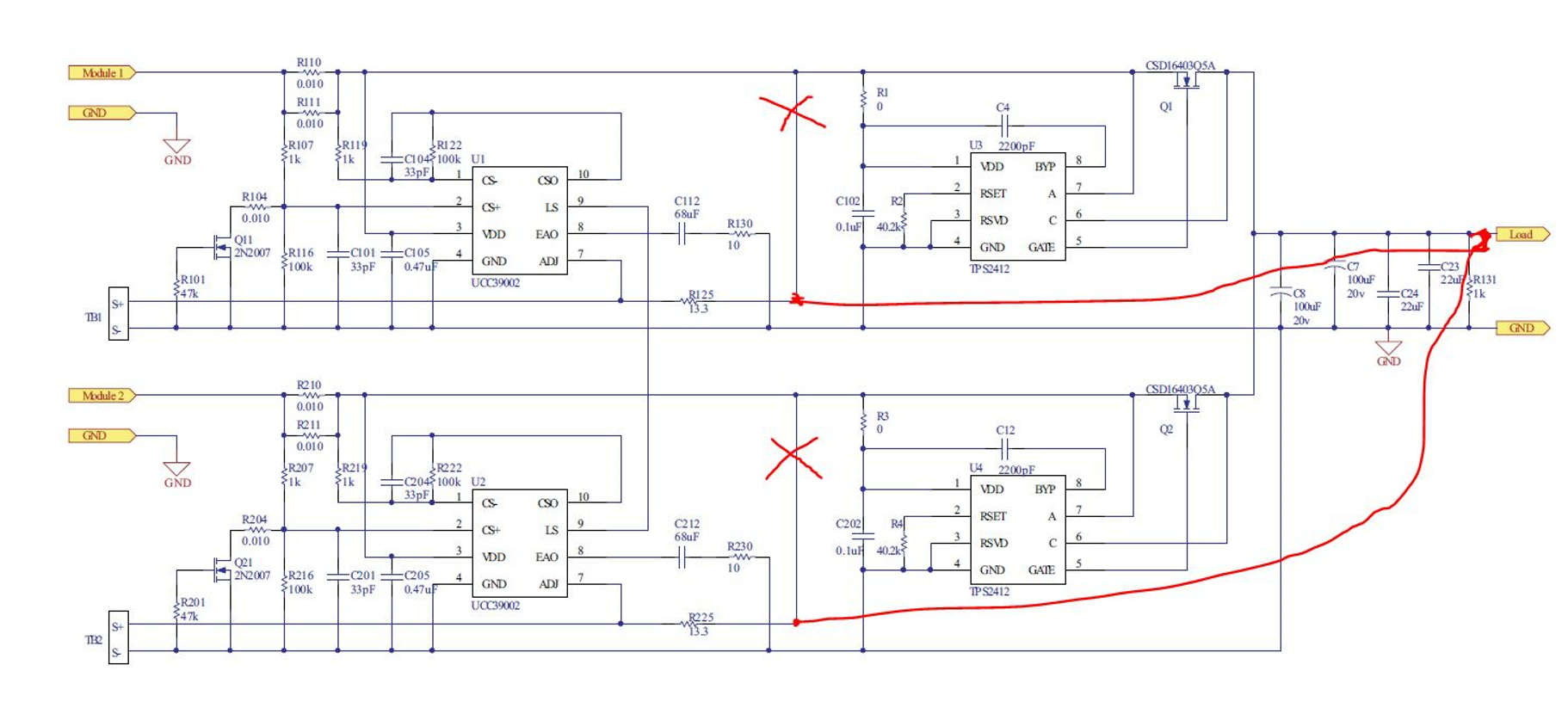Other Parts Discussed in Thread: TPS2412
Hi,
I am designing a power supply module with universal- AC input and 100W, 28V output. I have a paralleling requirement for this AC-DC power supply, which means if needed user can parallel these 2 to 3 modules together to increase the overall power output or to increase the reliability of the power supply modules.
In order to share the load equally among the power supply modules, I came across UCC29002 load share controller ic, this can fulfill the load share requirement for 28V output voltage application right?
but i also have a hotswapping requirement for N+1 modules parallel redundancy solution. for this requirement I could see UCC29002+TPS2412 , this can fulfill hotswapping requirement right?
And this AC-DC power supply should support Remote sensing to compensate for maximum of 0.5V(0.25Vin each output lead) difference in voltage between load and power supply module.
So to compensate this lead length drop, sense+ and sense- pins of power supply are normally should connect at load point. but when i see the application note of current sharing in redundant systems using UCC29002+TPS2412 +sense pin is connected to Vout through Radj resistor before oring Mosfet. please see in below screenshot.

here is my questions with respect to +sense pin connection.
1. if we connect +sense pin before ORing mosfet, how mosfet drop and lead length drop will get compensated?
2.can we connect this +sense pin at load point to maintain the precise load regulation at the load point?
3. is there any other problems if we connect +sense pin at load point as shown in below figure?

other question with respect to 28VDC output voltage level.
1. I could see from the datasheet of UCC29002 and TPS2412 maximum vdd can support to 15Vdc. i have seen high voltage application figure for ucc29002 load share ic.is there reference design for this selection transistor and bias resistors?
2.same way is there any reference guide document for TPS2412 controller also for 28VDC output voltage level?
I request you to kindly help me in proceeding further to use this combination of IC's with respect to my requirements.
Thanks.
Best regards,
Thirupathi. A




